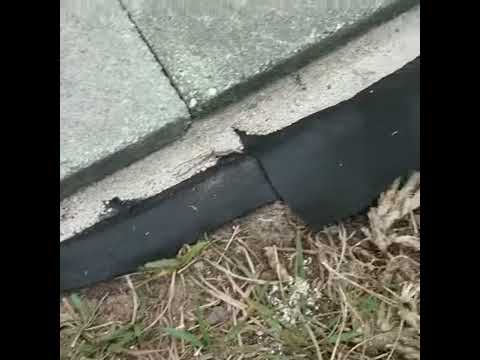Introduction
Paving setup is an important element of both domestic and business landscape design in the Bay Area. Whether you're looking to boost your driveway, outdoor patio, or pathway, comprehending the intricacies associated with paving can make all the distinction in between an effective task and a pricey blunder. This overview aims to supply an extensive overview of the paving setup process, especially concentrating on interlocking pavers. With the right expertise and method, you can guarantee that your paving job stands the test of time.
A Step-by-Step Guide to Effective Paving Installation in the Bay Area
Understanding Leading Installation
Before diving right into the specifics of leading installment, it's essential to recognize what it involves. Paving installation refers to putting down products such as rocks, concrete pieces, or bricks to produce sturdy surfaces for paths, driveways, patios, and more. In the Bay Area particularly, where weather can vary dramatically, choosing the best products and techniques can greatly influence long life and https://anotepad.com/notes/fygik2n6 aesthetics.
Why Pick Interlocking Pavers?
Interlocking pavers have gotten immense popularity because of their versatility and strength. Unlike traditional concrete or asphalt surfaces, interlacing pavers permit far better water drainage and can fit minor shifts in ground activity. They can be found in numerous forms and shades, permitting house owners to customize their spaces creatively.
Selecting the Right Paver Installer
Choosing a qualified paver installer is among one of the most important action in guaranteeing a successful paving job. Look for professionals with experience details to interlacing pavers and positive customer testimonials. Verify their credentials and ask for instances of previous work.
Planning Your Project: First Considerations
Before starting your paving task, take into consideration these factors:
Purpose: Is this a driveway, patio area, or walkway? Design: What style or look do you want? Budget: Just how much are you happy to spend? Permits: Exist any kind of local laws you need to follow?Choosing Materials
The kind of products you choose will considerably affect both longevity and appearance. Alternatives consist of:
- Concrete Pavers: Economical but much less customizable. Clay Bricks: Traditional appearance but could be much more expensive. Natural Stone: Extravagant look but calls for higher maintenance.
Each material has its pros and cons; knowing them will help you make an informed choice.
Preparing Your Site
Proper website prep work is vital for any type of paving installment project:
Clear the Area: Eliminate existing plants or debris. Excavation: Dig at least 6-8 inches relying on your setup needs. Grading: Guarantee proper water drainage by sloping far from buildings. Base Layer Installation: Use squashed rock or crushed rock for stability.Laying Base Material
Once your website is prepped, it's time to set base products:
Spread concerning 4-6 inches of base product evenly throughout your surface area area. Compact it utilizing a plate compactor or roller for optimum stability. Check levelness with a straight side; change as necessary.Installing Side Restraints
Edge restraints are important as they help keep your pavers in position gradually:
Use plastic or metal bordering around the perimeter. Secure them appropriately with stakes or spikes at routine intervals.Laying Interlocking Pavers
Now comes the interesting part-- setting those stunning interlocking pavers! Below's exactly how:
Start at one edge and lay pavers snugly versus each other. Use spacers if required for consistent gaps. Cut pavers with a damp saw as needed for edges.Filling Joints with Sand
After laying all your pavers:
Sweep polymeric sand into all joints between pavers. Compact once again utilizing a plate compactor; this helps secure whatever in place. Repeat sweeping till joints are full.Sealing Your Paving Surface
While securing isn't always necessary, doing so can offer additional security against discolorations and weather damage:
Choose a suitable sealer based upon your paver material. Apply equally using a roller; avoid puddles. Allow ample drying out time prior to using the surface.Maintenance Tips for Resilient Paving
To keep your brand-new smooth surface area:
- Regularly sweep away debris. Rinse off spills promptly. Apply sealer every couple of years if desired.
Common Mistakes During Paving Installation
Avoid these common mistakes throughout installation:
Skipping website prep work causes irregular surfaces. Not compacting base layers sufficiently may result in sinking over time. Ignoring water drainage problems might cause water merging troubles later on.FAQs About Leading Installation
1. How long does paving installation take?
The timeline varies based on dimension and complexity however generally ranges from 1-- 5 days.
2. Can I mount interlocking pavers myself?
While DIY is feasible with careful planning, employing professionals guarantees better results.
3. What is polymeric sand used for?
Polymeric sand fills up joints in between pavers and solidifies when damp for increased stability.
4. Exactly how do I fix cracked pavers?
Cracked pavers can be changed individually without requiring to remodel entire sections.
5. Is securing required after installation?
Sealing isn't required yet gives added protection against spots and dampness infiltration.

6. Can I install paving over existing concrete?
Yes, but ensure that existing surface areas are stable; otherwise, take into consideration removal first.
Conclusion
In recap, embarking on a paving project in the Bay Location needs careful preparation and execution-- from picking ideal materials like interlocking pavers to employing a knowledgeable installer who recognizes neighborhood conditions specific to The golden state's environment obstacles-- each step plays an essential function in attaining success! With this guide at hand, you're well-appointed to navigate through each phase with confidence while avoiding possible challenges along the way! Happy paving!